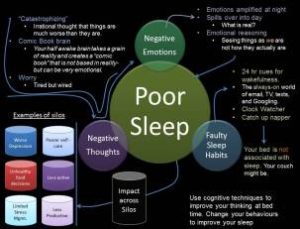Living with Thought OCD, or Pure Obsessional OCD, can sometimes feel like having a pesky roommate in your brain who won’t stop playing the same annoying song on repeat. You know the one—those intrusive, unwanted thoughts that pop into your head uninvited, causing anxiety and distress.
Thought OCD, also known as Pure Obsessional OCD or Pure O, is a subtype of OCD characterized by intrusive, unwanted thoughts or images that lead to distress and anxiety. These thoughts often revolve around themes such as harm, violence, or inappropriate sexual behavior.
But fear not! With a sprinkle of humor and a dash of lightness, you can learn to manage these intrusive thoughts and reclaim your mental space.
- Name That Thought: Sometimes, giving your intrusive thoughts a silly or ridiculous name can help take away their power. For example, if you’re constantly worried about locking the door, you could call that thought “Locky the Overzealous Protector.” It might sound silly, but it can help you distance yourself from the thought and see it for what it is—an irrational fear.
- The Thought Olympics: Turn your intrusive thoughts into a mental game. Imagine your intrusive thoughts as contestants in the Thought Olympics, competing for your attention. Whenever a thought pops up, give it a score based on how absurd or irrational it is. This can help you see that these thoughts are just passing mental events, not reflections of reality.
- The Mindful Observation Deck: Imagine your mind as a bustling train station, with thoughts coming and going like trains. Instead of jumping on every train of thought, practice mindfulness by observing them from a distance. You can even picture yourself as a curious bystander, watching the trains of thought come and go without getting caught up in them.
- The Comedy Channel: Treat your intrusive thoughts like a sitcom script. When a thought pops up, imagine it being acted out by your favorite comedians. This can help lighten the mood and remind you that these thoughts are just thoughts, not dire predictions of the future. Or add a silly soundtrack to the movie in your mind.
- The Thought Swap: Replace your intrusive thoughts with absurd or funny alternatives. For example, if you’re worried about germs, imagine the germs wearing tiny party hats and dancing around. This can help reframe your thoughts and reduce their impact on your mood.
- The Comedy Club: Invite your intrusive thoughts to a comedy show in your mind. Picture them as stand-up comedians trying to make you laugh. By turning your thoughts into a source of humor, you can take away their power and reduce their hold over you.
Remember, managing thought OCD is a journey, and it’s okay to have ups and downs along the way. With a bit of humor, a dose of mindfulness, and a sprinkle of self-compassion, you can learn to manage your intrusive thoughts and live a more lighthearted life.


